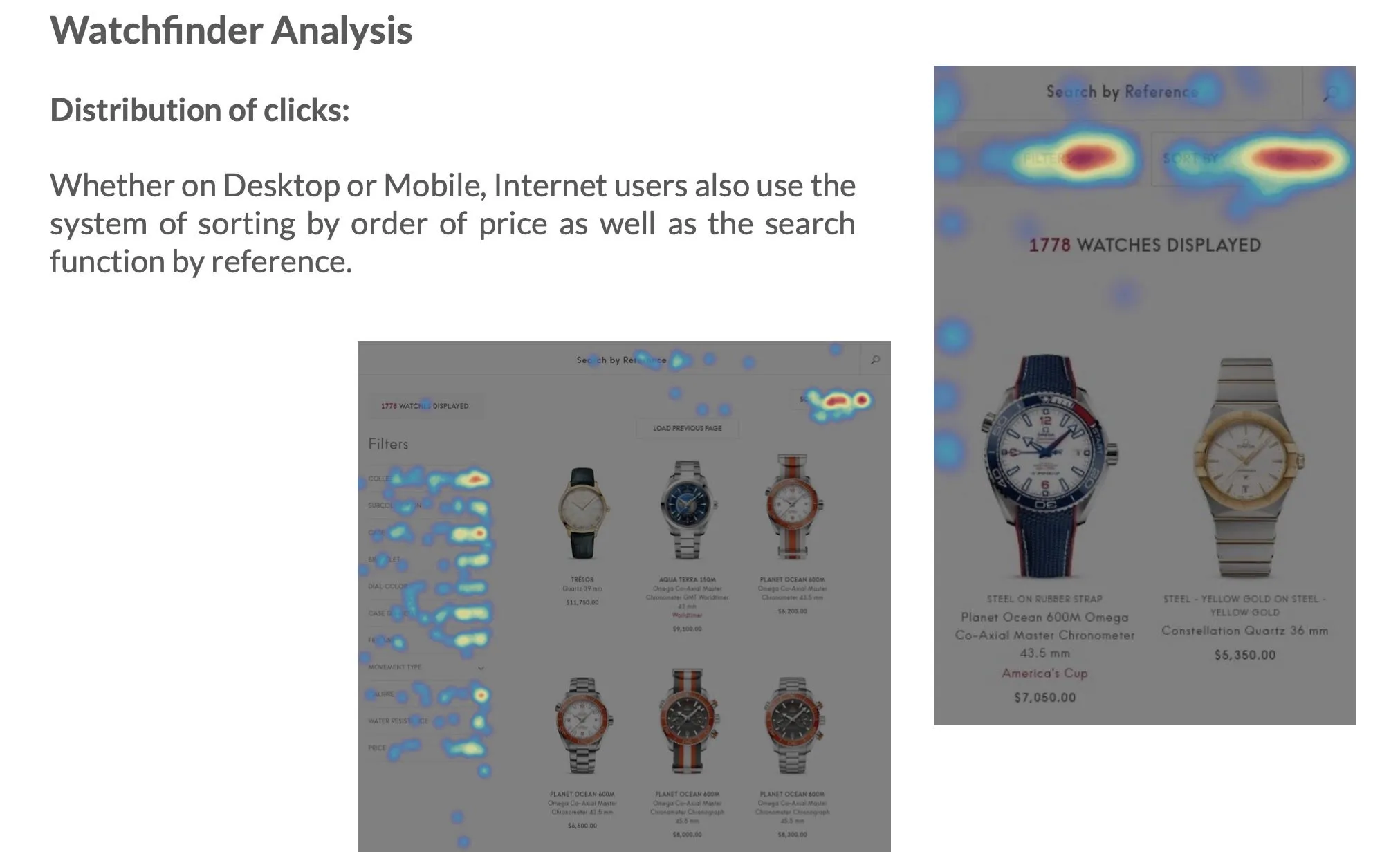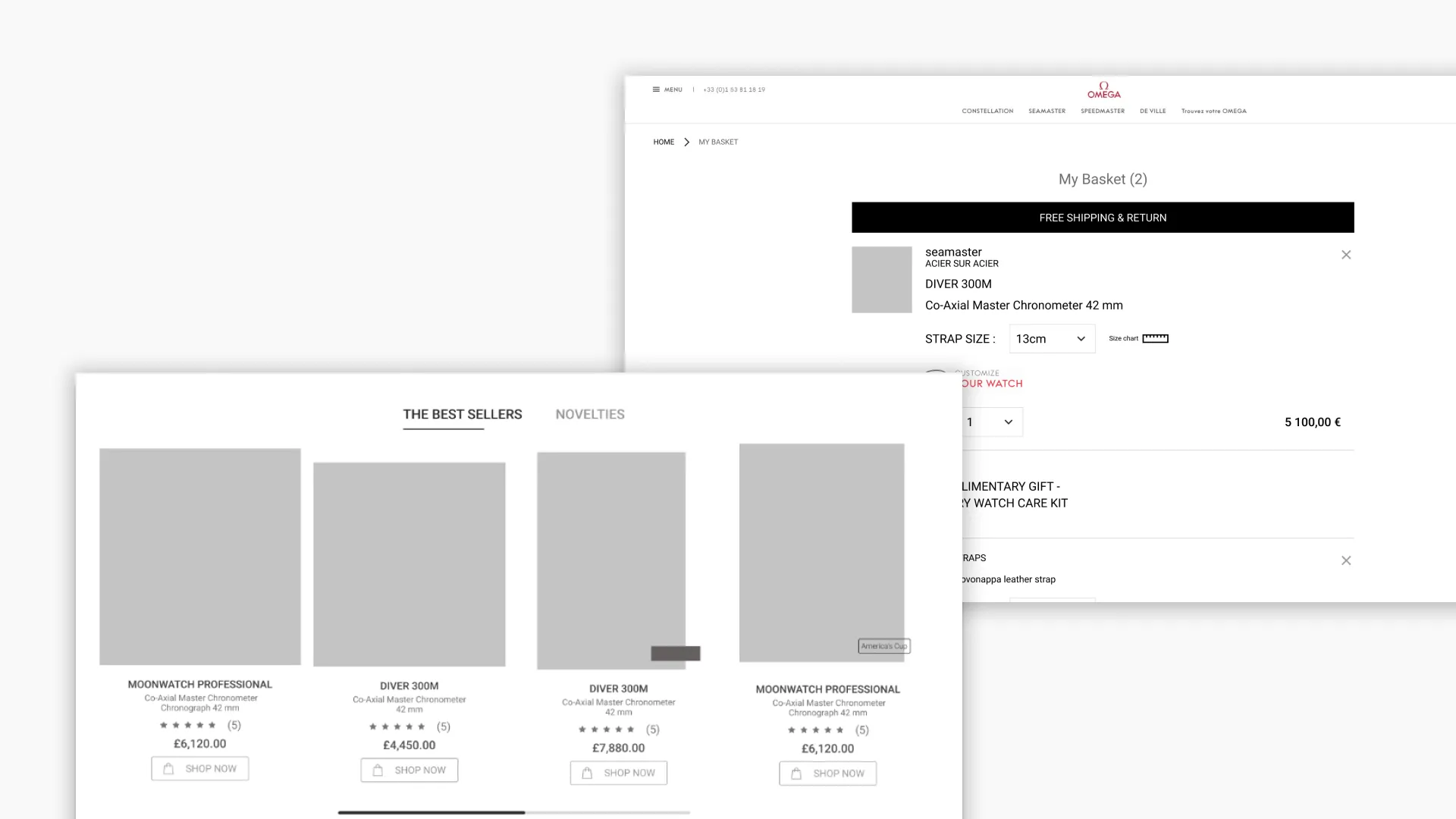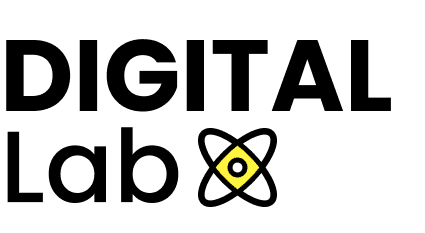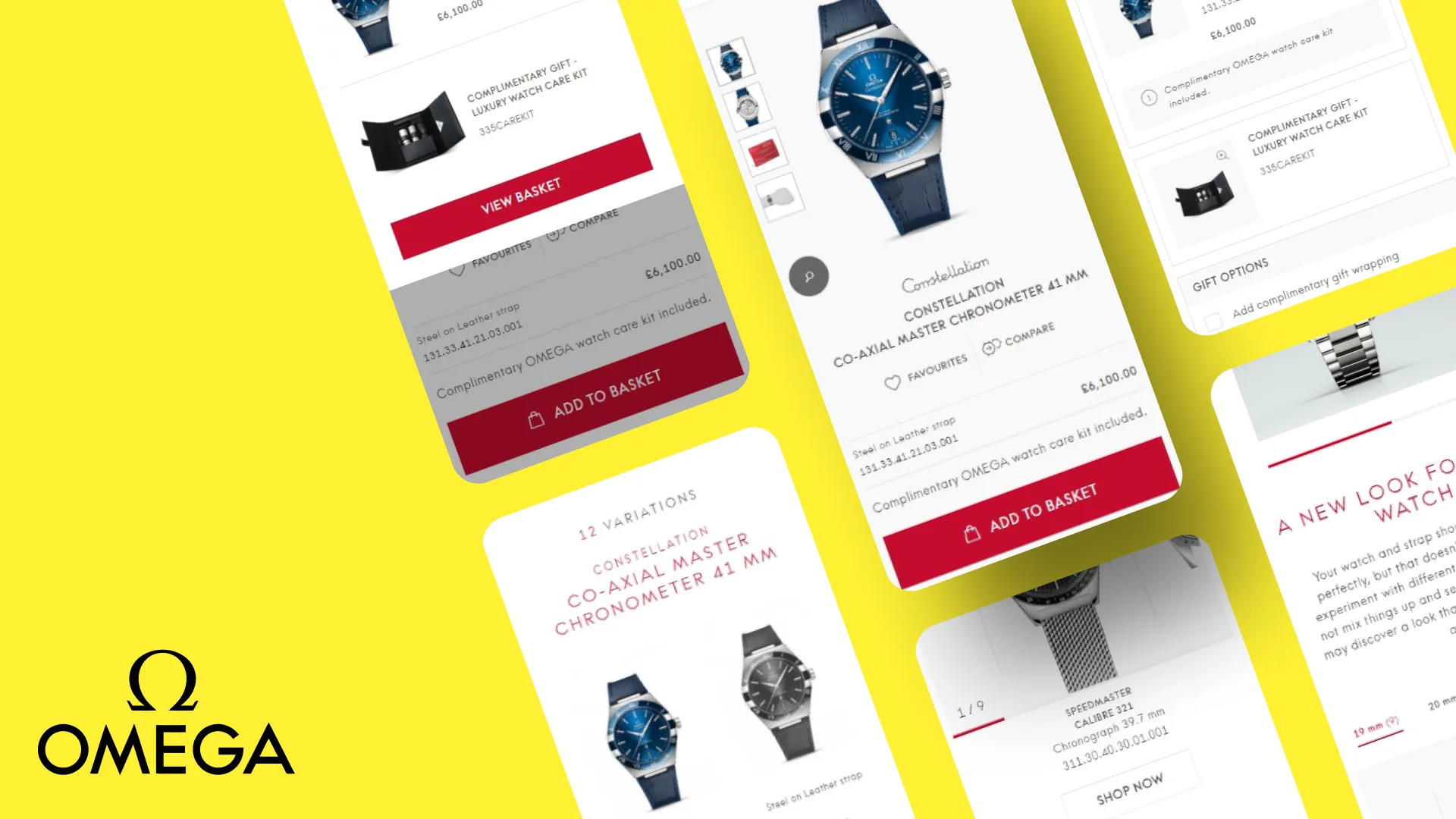Signing a non-disclosure agreement with Omega.
Some aspects of this study are not fully explained or visible in detail in order to uphold the protection and confidentiality of the client's information.
Project context
We were approached by a luxury communication agency to conduct a UX audit of the e-commerce site Omega the Swiss luxury watch manufacturer. The commerce section was only available in certain countries and navigation behaviors varied from one country to another depending on the country.
A quantitative study was conducted to better understand and analyze user behavior on the website. We supported the client from the audit phase to the final deliverable of desktop and mobile journeys.
Goals and challenges
Improving the user experience of the e-commerce website (search engine catalog navigation personalization checkout funnel...)
Providing a unique and cross-country experience
Making relevant recommendations without being able to query users
Integrating e-commerce best practices while maintaining a high-end experience
Aligning our UX recommendations with Omega's digital and communication strategy.
Methodology
A first kick-off meeting took place to define the project objective and the scope of our intervention.
We started our first study on Hotjar and extracted all necessary data (page traffic heatmaps element usage bounce rate conversion booking funnel...)
After extracting the data, a matrix presentation was carried out and presented to the client.
We identified all friction points and proposed a possible solution for each problem identified. A benchmark of e-commerce best practices in luxury helped support each of our recommendations. A prioritization workshop was then organized to feed into the roadmap, delivery of various topics and a retro planning was proposed with different milestones to achieve.
We had regular exchanges with the communication agency and Omega to coordinate the different rituals and ensure a smooth project execution (such as collaborative workshops, design review, summary and presentation of studies to teams backlog and sprint planning...)

Complete quantitative studies summary matrix
- Creation of wireframes
- Functional prototype
- Validation of proposals with stakeholders
- Creation of HD UX/UI mockups
- Validation of final UI
Tools and technology used :
Figma for centralizing information from different studies.
Figma for producing wireframes high-fidelity mockups and prototypes.
Trello for tracking daily tasks and prioritizing them (backlog sprint planning).
Teams for syncing and workshops with the client and communication agency.
PowerPoint for presenting reports.

Results
The different recommendations were gradually integrated into Omega's e-commerce site and A/B tests were conducted to monitor performance.
The use of search is much more efficient and customers navigate more easily between collections thanks to features such as autocomplete and product suggestion.
Mobile experience showed an increase in time spent on product pages that were shortened thanks to the addition of micro-interactions.
Filters have also been simplified and the most popular search criteria have been moved to the first level of interaction.
Even though the purchasing function is now available many customers still prefer to go to the store to buy an item.

